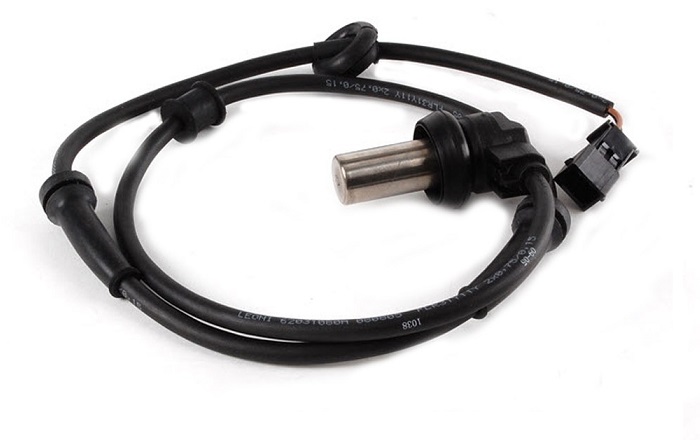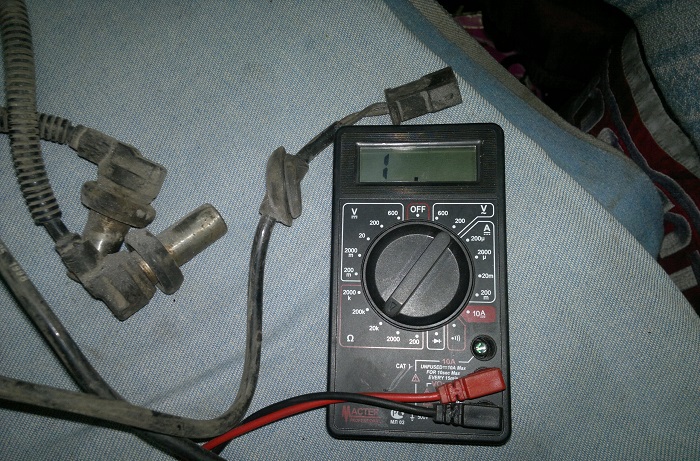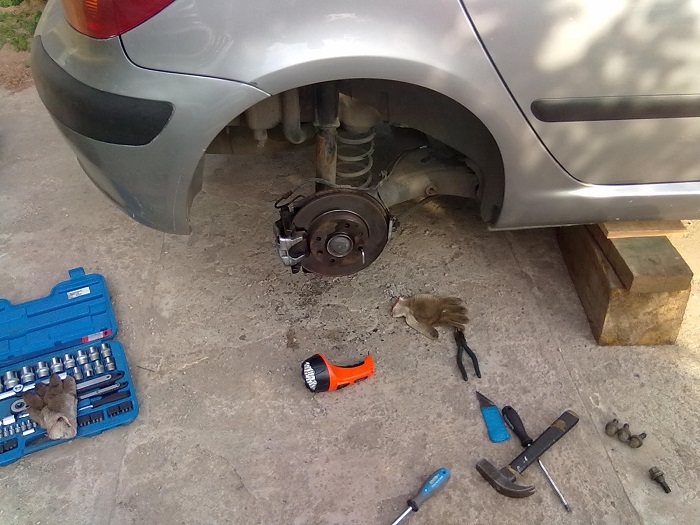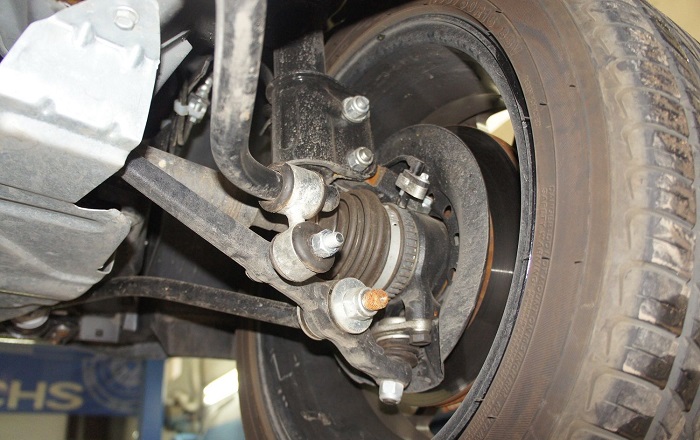Using all the functions of a modern car does not exclude periodic breakdowns in sensor systems, which reduces the safety and quality of car operation. In particular, ABS sensors located on the wheel hubs often behave unpredictably. Dirt and moisture constantly get on them, which does not exclude their frequent failure. Every time the sensors start behaving illogically again, it will not be easy to go to the service station and diagnose the system. In this case, you can go two ways. The first is to learn how to independently diagnose sensors using a computer and connect the diagnostic program to the on-board diagnostic device. The second is to determine the malfunction of sensors according to other criteria.

If you have a laptop that could be used as a diagnostic device, you can easily troubleshoot these systems. It is enough to connect the diagnostics of the sensors and start moving. The computer will show the speed of the wheel with the broken sensor as 0 kilometers per hour, the ABS on this wheel will constantly try to reduce the braking force, even if you do not press the brake at all. If you do not have a computer, you will have to otherwise determine possible problems with the sensors of this tricky brake force control system. Today we will look at the diagnosis and replacement of ABS sensors.
How to recognize that the ABS sensor is no longer performing its functions?
On older vehicles, a malfunctioning ABS sensor can lead to the most unpleasant consequences. In the event of a wire break, the voltage to the computer may not reach, as with a locked wheel. Therefore, a simple computer perceives this situation in such a way that one of the wheels is blocked. Ultimately, the ABS begins to unlock one wheel during braking, which can completely disable the braking system, and during an emergency stop, provoke a complete loss of control up to a car overturn. Signs that the ABS sensor is faulty are as follows:
- after inadequate operation of the system, the inscription “ABS” appears on the dashboard, the module stops working;
- on modern cars, after starting the engine, the ABS light does not go out, and the system stops working;
- during weak braking, the pedal vibrates, the brake force distribution system is activated;
- auxiliary brake systems, amplifiers and balancing devices are constantly working;
- the on-board computer issues a number of problems that are related to the operation of the anti-lock braking system;
- when connected to a diagnostic computer, an error code for the operation of the sensor of the system against wheel lock is read.

You can independently determine the malfunction of the sensor in the event of a constant indication of the ABS light on the dashboard. This is the main indicator that some sensor has ceased to function and the system simply does not work. In this case, the first task of the motorist will be to check the integrity of the wires to the sensors. This wiring often breaks due to the rejection of stones in the area of the hub or other objects that cut the wire. Therefore, such a problem is not uncommon, almost all car owners with this module know it.
Methods for self-diagnosis of ABS sensors on a car
If you have a car with a more or less decent ABS system, then self-diagnosis of this system may also be present in it. For example, on some BMWs, even of the old model, there is such a system that not every car owner knows about. After starting the engine, the ABS light is on for three seconds, then immediately after it goes out, press the brake pedal five times. The self-diagnosis system will start, and the number of blinks of the light will tell you which modules in the anti-lock braking system were faulty. Read the instructions for the self-diagnostic capabilities of your machine. You can check the sensors in another way:
- find the manual for your car with electrical diagrams;
- remove the connector from the ABS block;
- find the so-called pinout of the ABS block;
- use a conventional electrical tester;
- check the resistance on the pins that are responsible for the sensors;
- if the resistance shows a break, examine the situation on the wheel;
- to do this, remove the wheel and find the system sensor;
- measure the resistance on the incoming wires;
- examine the wires for continuity.

So you can determine which specific parts of the anti-lock braking system caused the malfunction of the entire module. With the help of such diagnostics, you can save a fair amount of money on car service services. Even if replacing a sensor or wire on your own turns out to be a difficult task for you, you can come to the service with a request to replace a specific part, rather than carry out a full diagnosis. So you save money, at least, on diagnostic services, as well as on fixing those malfunctions that the diagnostic system will find (it's no secret that they may not actually exist).
Replacing ABS sensors on your own - is it a real task?
In this case, many drivers prefer to turn to specialists, because this is an important system that can save lives in an emergency. However, the ABS sensor is quite easy to change. This procedure is not so expensive at the service station, so it will still be advisable to give the car for repair. But if you want to service the system yourself, it is quite possible. After the diagnostics done, you will determine on which wheel the sensor is not working properly. After that, just read the part of the manual for your car to determine the warnings and follow these steps:
- raise the desired part of the car on a jack for high-quality access to the sensor;
- determine the landing site of the old sensor, as well as methods for its removal;
- unscrew the bolt that holds the sensor in the required position;
- remove the sensor from its place, examine it visually for damage;
- directly replace the old sensor with a new one;
- do not forget about the correct connection of electrical connections;
- screw the sensor back to its original place using the bolt that you unscrewed earlier;
- replace the wheel, drive the car and check the operation of the system.

In this case, an equally important process will be the purchase of a high-quality ABS sensor. The fact is that each car uses certain features of the sensors that cannot be paired with other parts. If you have a car that was bought with hands, it is better to determine which ABS sensors are currently in place. You will not always find original factory elements on the hubs. It is possible that the previous owner already replaced the sensors with cheaper ones, which caused the breakdown of this element of the electrical system of your car. The selection of the sensor is of great importance for the normal operation of the machine. Watch a video about replacing the ABS sensor on a first generation Renault Logan car:
Summing up
There are many breakdowns that can affect the ABS system. But the most common type of malfunction is a sensor failure. If the anti-lock braking system on your vehicle is showing problems, the first thing to do is check the sensors. There are several methods for checking the correct operation of these parts, so you can choose the most convenient testing option. However, diagnostics alone will not help the case, you will have to correct the problems that have arisen.
Today you can find and purchase ABS sensors from any manufacturer. You can find both simple parts for replacing factory sensors, and original system elements at very affordable prices. And selection in this case will play a very important role. Use factory catalogs to select sensors that are fully compatible with your vehicle and match the functions of the ABS system. So that the anti-lock braking system does not interfere with the quality operation of the car, but helps to perform important tasks when braking, monitor the health of the sensors and perform diagnostic and repair work in time. Moreover, you can change the sensors of this system yourself. How often does ABS show problems in your car?







